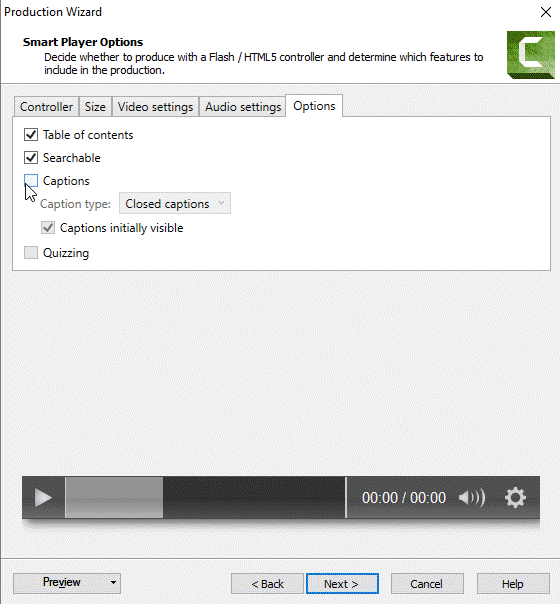Captioning screencasts can help everyone, not just the hearing impaired.
 Closed captioning on TV has been around since 1980, and it was a watershed moment in making mass entertainment accessible to people who couldn’t hear. As those who work in US government are well aware, section 508 of the Rehabilitation Act forces all productions, state and federal alike, to be closed captioned according a particular set of specs. This might sound like a hassle, until you realize just how world-changing it can be for your audience.
Closed captioning on TV has been around since 1980, and it was a watershed moment in making mass entertainment accessible to people who couldn’t hear. As those who work in US government are well aware, section 508 of the Rehabilitation Act forces all productions, state and federal alike, to be closed captioned according a particular set of specs. This might sound like a hassle, until you realize just how world-changing it can be for your audience.
And as you’ll see, I do mean your ENTIRE audience.
No sound? No problem.
Audio is wonderful for helping to push your knowledge and enthusiasm across the ether. But you definitely don’t want to close off your message to people not receiving the audio portion of the program. This applies certainly to the deaf, but also to other folks who simply lack speakers on their PC.
Oh, and it’s super important if you’re publishing to Facebook, as the video clips in peoples’ feeds always run without sound unless specifically clicked on. You therefore want to provide a complete message without the reliance on sound.
Not everyone’s a native speaker.
Of course, even if the user is hearing your words loud and clear, it doesn’t necessarily mean that they can process what you’re saying.
Take it from a guy who has managed to acquire two foreign languages. Even though I’ve lived in Spain for over a decade, watching the news here still taxes my brain. But because I’m a voracious reader, I can parse written text a helluva lot better than a stream of speech, which to my ears sometimes feels like it’s coming out of a firehose.
Internet video technology can provide a bit of support in these cases. The abilities to replay misheard segments as well as slow down playback can both be a godsend to the non-native speaker.
Even so, a visual stream of the audio can work wonders in being understood by those with more limited language. In fact, you might want to check your web metrics to see where most of your users are coming from. If you have a particularly large set of international folks from the same place, a special version of your video with translated captions might be just the ticket.
A searchable video helps ALL your users.
Okay, at this point I’m speaking exclusively to users of Camtasia Studio, as it is the only screencasting or video tool (to my knowledge) that lets you do this incredibly cool thing. For this, you’ll need to produce using the TechSmith SmartPlayer.
Once you have captions in place, you’ll be able to make your entire video searchable. That’s right. EVERY SINGLE WORD of your production. This is an incredibly big deal for lengthy tutorials.
My Shadow the Screencaster course, for example, is two hours long. If someone vaguely recalls how I mentioned the process of animation easing, but doesn’t remember precisely where, a two-second search will bring them to that exact point in the course.

Human beings aren’t the only ones looking at your captions.
A little while back, one of my Boot Camp attendees asked me in class whether captions are parsed by the search engines. At the time, I wasn’t sure.
So I checked. Turns out that not only do the major search engines check out your captions, they’re actually a pretty important component of optimizing your videos for search.
Note that in order for this to work, the video must be closed captioned, that is, sport captions that the user can turn and off. Camtasia (on either platform) can do this, and you can also create or import captions with popular video services like YouTube or Wistia.
Of course, short, one-off screencasts created for a small group probably don’t merit the full “captioning treatment,” but if you’re creating lengthy material for a large audience, the extra time spent in synching up those captions can pay some pretty serious dividends for you, your videos, and the Internet as a whole.


